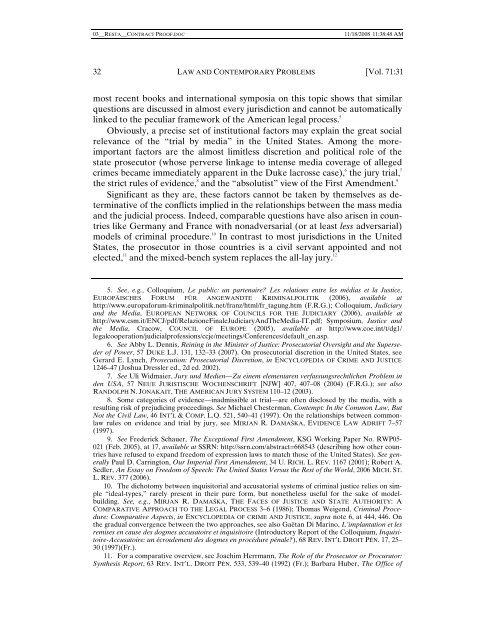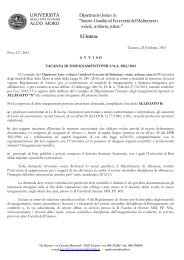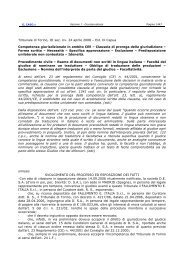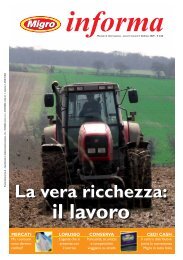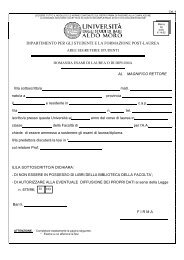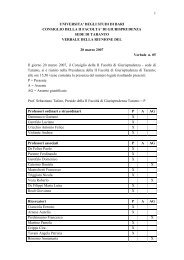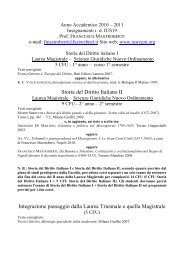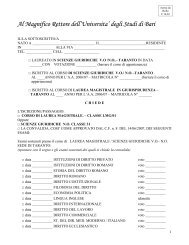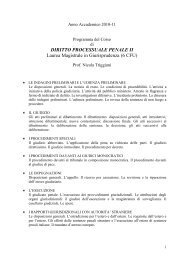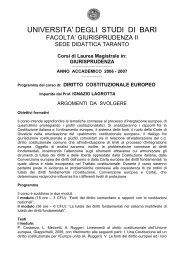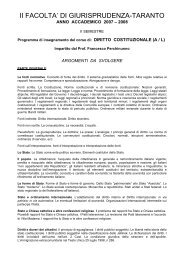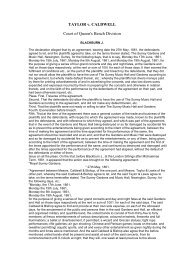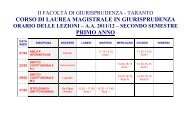TRYING CASES IN THE MEDIA: A COMPARATIVE OVERVIEW
TRYING CASES IN THE MEDIA: A COMPARATIVE OVERVIEW
TRYING CASES IN THE MEDIA: A COMPARATIVE OVERVIEW
You also want an ePaper? Increase the reach of your titles
YUMPU automatically turns print PDFs into web optimized ePapers that Google loves.
03__RESTA__CONTRACT PROOF.DOC11/18/2008 11:38:48 AM32 LAW AND CONTEMPORARY PROBLEMS [Vol. 71:31most recent books and international symposia on this topic shows that similarquestions are discussed in almost every jurisdiction and cannot be automaticallylinked to the peculiar framework of the American legal process. 5Obviously, a precise set of institutional factors may explain the great socialrelevance of the “trial by media” in the United States. Among the moreimportantfactors are the almost limitless discretion and political role of thestate prosecutor (whose perverse linkage to intense media coverage of allegedcrimes became immediately apparent in the Duke lacrosse case), 6 the jury trial, 7the strict rules of evidence, 8 and the “absolutist” view of the First Amendment. 9Significant as they are, these factors cannot be taken by themselves as determinativeof the conflicts implied in the relationships between the mass mediaand the judicial process. Indeed, comparable questions have also arisen in countrieslike Germany and France with nonadversarial (or at least less adversarial)models of criminal procedure. 10In contrast to most jurisdictions in the UnitedStates, the prosecutor in those countries is a civil servant appointed and notelected, 11 and the mixed-bench system replaces the all-lay jury. 125. See, e.g., Colloquium, Le public: un partenaire? Les relations entre les médias et la Justice,EUROPÄISCHES FORUM FÜR ANGEWANDTE KRIM<strong>IN</strong>ALPOLITIK (2006), available athttp://www.europaforum-kriminalpolitik.net/franz/html/fr_tagung.htm (F.R.G.); Colloquium, Judiciaryand the Media, EUROPEAN NETWORK OF COUNCILS FOR <strong>THE</strong> JUDICIARY (2006), available athttp://www.csm.it/ENCJ/pdf/RelazioneFinaleJudiciaryAndTheMedia-IT.pdf; Symposium, Justice andthe Media, Cracow, COUNCIL OF EUROPE (2005), available at http://www.coe.int/t/dg1/legalcooperation/judicialprofessions/ccje/meetings/Conferences/default_en.asp.6. See Abby L. Dennis, Reining in the Minister of Justice: Prosecutorial Oversight and the Supersederof Power, 57 DUKE L.J. 131, 132–33 (2007). On prosecutorial discretion in the United States, seeGerard E. Lynch, Prosecution: Prosecutorial Discretion, in ENCYCLOPEDIA OF CRIME AND JUSTICE1246–47 (Joshua Dressler ed., 2d ed. 2002).7. See Uli Widmaier, Jury und Medien—Zu einem elementaren verfassungsrechtlichen Problem inden USA, 57 NEUE JURISTISCHE WOCHENSCHRIFT [NJW] 407, 407–08 (2004) (F.R.G.); see alsoRANDOLPH N. JONAKAIT, <strong>THE</strong> AMERICAN JURY SYSTEM 110–12 (2003).8. Some categories of evidence—inadmissible at trial—are often disclosed by the media, with aresulting risk of prejudicing proceedings. See Michael Chesterman, Contempt: In the Common Law, ButNot the Civil Law, 46 <strong>IN</strong>T’L & COMP. L.Q. 521, 540–41 (1997). On the relationships between commonlawrules on evidence and trial by jury, see MIRJAN R. DAMAŠKA, EVIDENCE LAW ADRIFT 7–57(1997).9. See Frederick Schauer, The Exceptional First Amendment, KSG Working Paper No. RWP05-021 (Feb. 2005), at 17, available at SSRN: http://ssrn.com/abstract=668543 (describing how other countrieshave refused to expand freedom of expression laws to match those of the United States). See generallyPaul D. Carrington, Our Imperial First Amendment, 34 U. RICH. L. REV. 1167 (2001); Robert A.Sedler, An Essay on Freedom of Speech: The United States Versus the Rest of the World, 2006 MICH. ST.L. REV. 377 (2006).10. The dichotomy between inquisitorial and accusatorial systems of criminal justice relies on simple“ideal-types,” rarely present in their pure form, but nonetheless useful for the sake of modelbuilding.See, e.g., MIRJAN R. DAMAŠKA, <strong>THE</strong> FACES OF JUSTICE AND STATE AUTHORITY: A<strong>COMPARATIVE</strong> APPROACH TO <strong>THE</strong> LEGAL PROCESS 3–6 (1986); Thomas Weigend, Criminal Procedure:Comparative Aspects, in ENCYCLOPEDIA OF CRIME AND JUSTICE, supra note 6, at 444, 446. Onthe gradual convergence between the two approaches, see also Gaëtan Di Marino, L’implantation et lesremises en cause des dogmes accusatoire et inquisitoire (Introductory Report of the Colloquium, Inquisitoire-Accusatoire:un écroulement des dogmes en procédure pénale?), 68 REV. <strong>IN</strong>T’L DROIT PÉN. 17, 25–30 (1997)(Fr.).11. For a comparative overview, see Joachim Herrmann, The Role of the Prosecutor or Procurator:Synthesis Report, 63 REV. <strong>IN</strong>T’L. DROIT PÉN. 533, 539–40 (1992) (Fr.); Barbara Huber, The Office of


